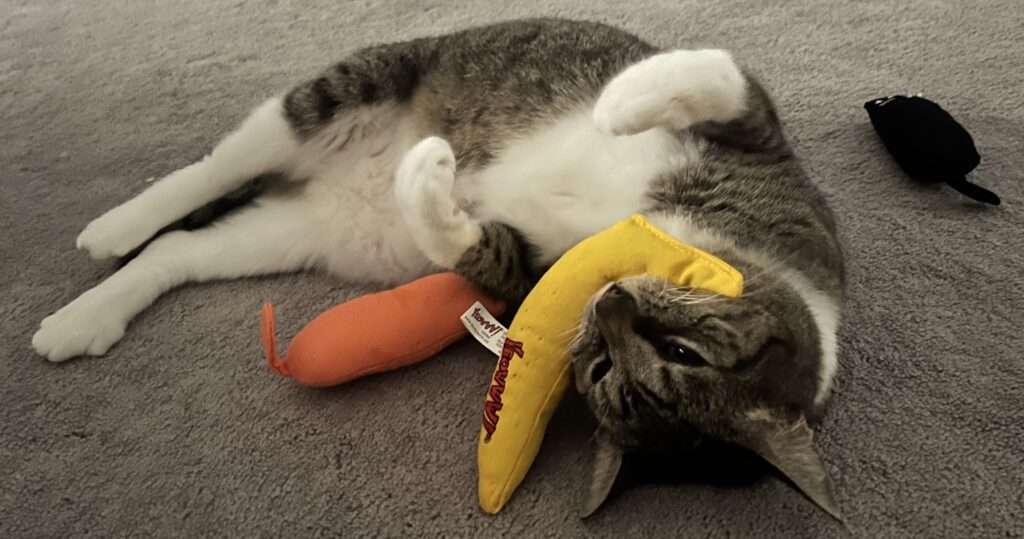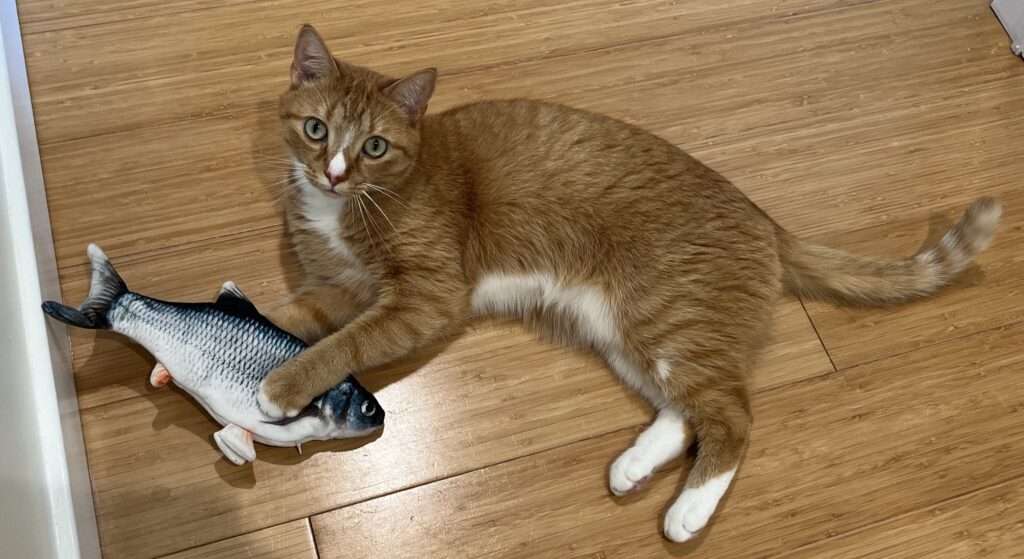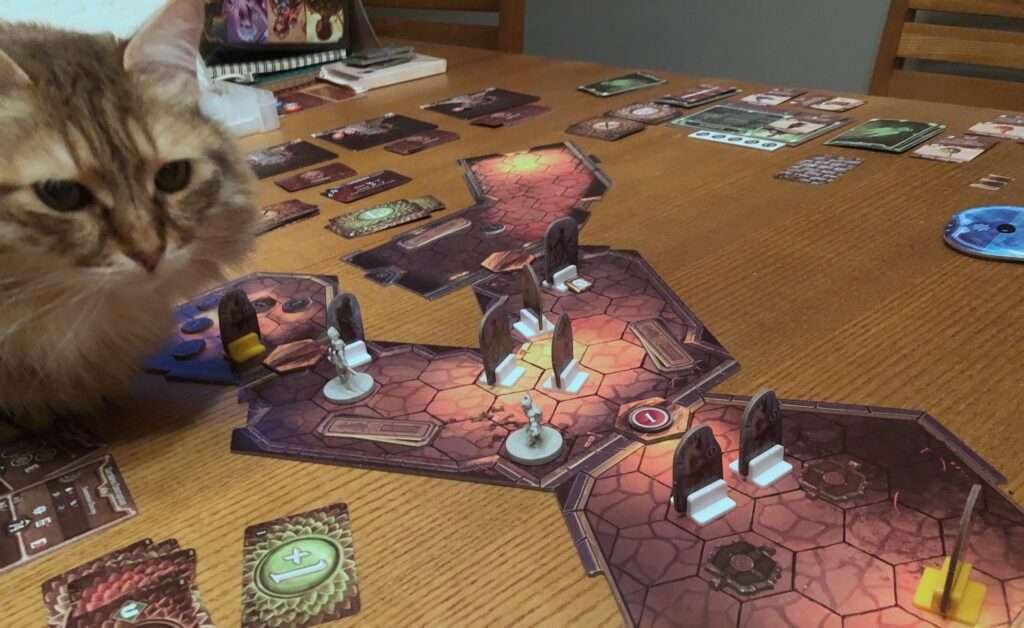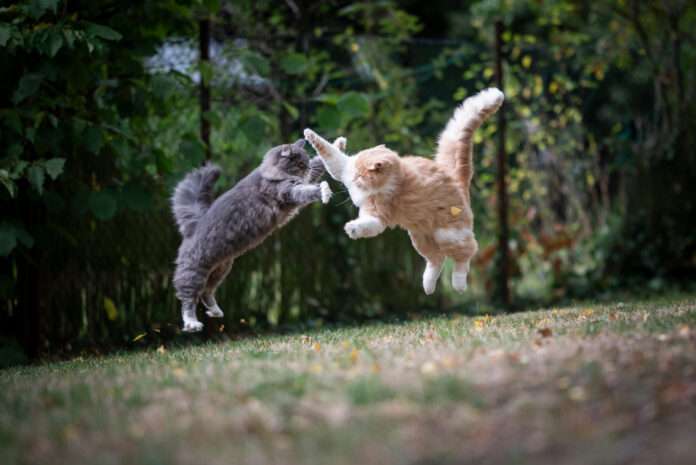What children and felines teach us about play can be applied to game design
by Jenny Lim and Erica McCay of Valtech Themed Entertainment Studio
How do you make something fun? As interactive designers, we know that winning – while rewarding – is not enough to make a game engaging. Nor are points, nor timers, nor any of the other shorthand tricks that designers use to amp up a game. A game must have a fun activity at its core. If it does not, no amount of points and “gamification” will get players hooked.
Our source of inspiration starts at home. Kids and cats, each in their own way, create fun activities out of seemingly nothing. With a delicate balance between curiosity and chaos, these moments of joy and expression illuminate core principles of interactive design.
We will explore this with a case study of two games: Beat the Buzz and Laser Cats. We will examine the wisdom of the kiddie and the kitty through three principles:
- Balancing mastery and surprise
- Exploring power and competition
- Playing without purpose
Balancing mastery and surprise
Play should be intuitive yet unexpected: a balance of skills that the player can master, and surprises that keep the player from getting bored.
Have you ever entertained a cat using a laser pointer or a dangling toy? Move it too quickly, and the cat just watches. Don’t move the toy at all, and the cat ignores the whole show. When wielding the cat toy, you must mix moments of stillness with quick, sudden bursts of movement. You must make the prey catchable, but not a sitting duck. Cats want an attainable challenge.
Have you ever heard a child shout “the floor is lava!”? Anyone can walk across a room, but can you jump? And if you become too good at jumping from chair to table to couch, can you dodge freeze blasts from another player pointing a stick?
Introducing increasingly complex rules and obstacles to reinvent how you are allowed to move through space allows mastery over and over again. Making up their own rules, then layering more on top while playing, creates surprise and continuing interest – even for the child making the rules. How will other players react? Kids crave evolution.
Exploring power and competition
Play provides a space to explore power and competition, whether physically or fictionally.
Games of power aimed at humans can range from literal (Nerf wars) to symbolic (Monopoly), with no decrease in brutality – in fact, we’d argue that Monopoly is extremely brutal, though played in a civilized manner. The game, invented in the 1930s by Charles B. Darrow, in fact has origins as a Socialist statement. Darrow came up with two versions: one where everyone gets along, and one where players are capitalists out to bankrupt each other.
We all know which version of Monopoly survived, but why? As kids learn the rules of society – how to behave, how to interact – they are required to sit still, to be nice to people, to share, etc. whether they are in the mood or not. What better way to blow off steam than to impoverish your friends within a fictional and strictly limited sphere? While we may condemn robber barons in reality, within the realm of fantasy one may play it with gusto.
Playing without purpose
The purest form of play is unprompted. The child who runs around with a ball despite no playmates, no scoring, no goal or points. The cat who attacks the shoelace that never did anything wrong. This is a gold mine for inspiration. What is your child or cat doing? Can you do it, too?
Kids and cats let themselves be impulsive and in-the-moment because they aren’t constrained by considering the consequences. This can be a safety challenge, but one can design for open-ended exploration within limits.
By being free to follow impulse rather than overcalculate, kids and cats are the best play-testers of an experience. And if something is not fun, they will not do it. Kids and cats show their feelings, and kids have the added bonus of being very vocal about what they did not like.
Plus, kids and cats have an amazing ability to break things. They are natural quality testers. Better to learn where the experience, or physical pieces, break early on, right?
So how do the above principles apply to actual games?

Beat the Buzz
Beat the Buzz is a reinvention of the childhood hand-slap game. It was designed by Erica McCay and Jenny Lim, and built by Valtech Themed Entertainment Studio, IFM Interactive, and Alchemy Controls. Watch a video at tes.valtech.com/InPark95. In Beat the Buzz, players place their hands on a podium and feel a haptic signal that signifies that it’s their turn. For as long as a fan blows on their hand, they must score as many points as they can by frantically slapping a large button.
The challenge? It’s a one-handed game. Will you keep hitting the button and risk scoring points for another player, or spend precious moments checking the fan to see if it’s still your turn?
- Balancing Mastery and Surprise
- Each player gets turns of varying length, such as 1, 2, 1.5 seconds. If you play enough, maybe you get a feel for those durations.
- The players are called randomly, so you might master a feel for turn duration but when will your fan go off ?
- Can you discover other ways to learn when it is your turn, perhaps by engaging the audience to assist?
- Power and Competition
- How fast can you slap the button?
- Can you stop at the right time, so you don’t give points to other players?
- As an audience member, can you distract or mislead players, allowing you to be higher in the leaderboard when it is your turn?
- Playing without Purpose
- Is it fun to hit buttons that light up? Yes, it is! Can we get adults to let down their guard and be silly at a professional networking event? Yes, we can! And the shared experience is a great icebreaker!
- Can we get adults to let down their guard and be silly at a professional networking event? Yes, we can! And the shared experience is a great icebreaker!




Laser Cats
Laser Cats was made by Jenny Lim and DongChan Kim. You can read more and watch a video at jlimetc.com/games#/laser-cats/. It lets you be a cat chasing a laser.
One player directs a laser mounted on their head. The other player attempts to catch the laser with their “paws” (soft mittens with light sensors sewn onto the back). Every time the sensors catch the laser, the Cat scores a point.
- Balancing Mastery and Surprise
- The Laser Player wants to make the Cat Player run around to maximum comic effect.
- The Cat Player impresses the audience with their athleticism. Didn’t think I could jump that high, did you?
- A few basic rules ensure that the Laser Player has control, allowing them to change the requirements for mastery on the fly.
- Power and Competition
- Laser Player: Move your head ever so slightly, and the cat will dance to your tune. How ridiculous can you make your friend, family member, or a total stranger look?
- Cat Player: Yes, you’re being manipulated. But you’re also the one racking up the points!
- Playing without Purpose
- Is it fun to chase things? Yes, it is.
Discovery leads to game design
Game design is not a matter of invention, but discovery. What behavior do we observe in kids and cats who play without prompting? How can we identify the core appeal of these activities and create games that crystallize the payoff for human players of all ages?
We draw inspiration from three common attributes:
- Balancing mastery and surprise
- Mastery must be possible, but it can’t be too easy
- Add new ways to master the game as players improve
- Create surprise through layering rules
- Exploring power and competition
- Embrace ways to break everyday rules in a safe way
- Pivot from the original design to find the fun!
- Playing without purpose
- Allow room for play with no set goal or instruction
- Find opportunities to play everywhere
These same attributes can be found in the most successful games, from tabletop RPGs to the embedded games in high-end theme park attractions such as Super Nintendo World.
When looking for inspiration, turn to the simplest examples in daily life. We recommend you find a young and/or furry muse, identify the basic source of joy, and build from there.
More information: https://www.tes.valtech.com/ • •
Jenny Lim is an NYC-based game and interactive designer interested in play and immersive experiences. She’s used game engines, writing, physical computing, props, sets, video and audio to tell embedded, interactive, linear and nonlinear stories. Her work has shown at the Tribeca Film Festival, Indiecade East, Games for Change, the Museum of Modern Art in New York, and on HBO…and will soon be featured at an amazing theme park that cannot be named!
She works as an interactive designer at Valtech Themed Entertainment Studio. In her free time, she enjoys public speaking, listening to audiobooks and attempting to entertain her cat.
Erica McCay (she/they) is a creative director, writer, and designer of stories that connect people and place. She has worked in the fields of interactive theme parks, theatre, and play-based education since 2005.
For the last ten years between Universal Creative and Valtech Themed Entertainment Studio, Erica has focused on designing large-scale interactive experiences, including wand magic at Universal Studios Hollywood and the land-wide game for Universal’s Thea award-winning Super Nintendo World in Japan, Hollywood, and Orlando.
Erica has an MFA in Creative Writing and multiple patents including “Interactive gaming system.” Outside of work, Erica enjoys playing with her daily inspirations: her spouse, two kids, and two cats.









